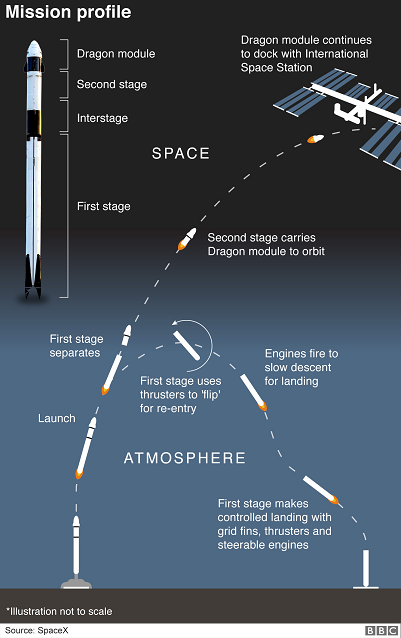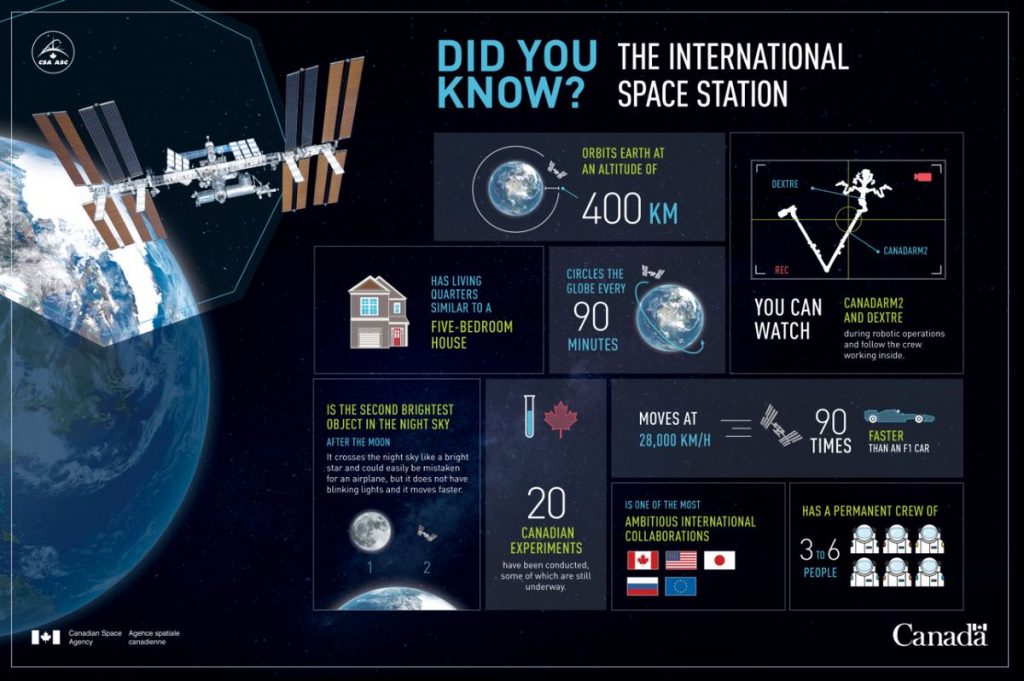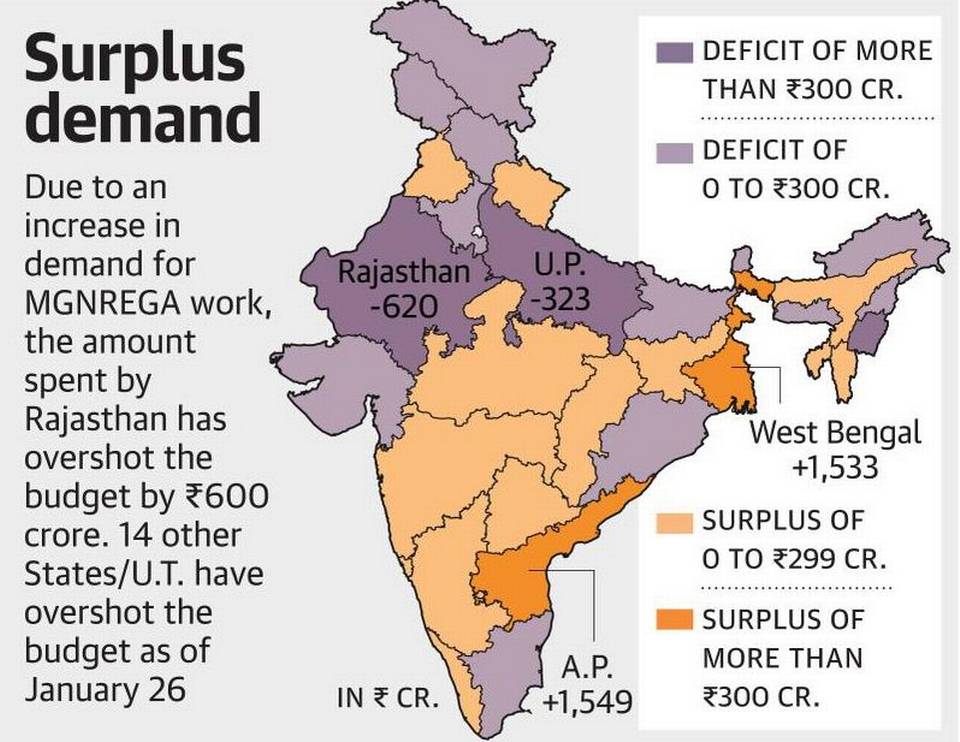Contents
- Nasa SpaceX crew return
- HC notice to Facebook on plea
- Fund crunch hits MGNREGA scheme
- Wildlife nod not required for railway projects: Ministry
- Rising real lending rate roiling RBI rate cuts: report
NASA SPACEX CREW RETURN
Focus: GS-III Science and Technology
Why in news?
The SpaceX Dragon Capsule came down in the Gulf of Mexico with the crew, successfully completing its journey back to Earth from the International Space Station.
Details
- It was the first splashdown by U.S. astronauts in 45 years, with the first commercially built and operated spacecraft to carry people to and from orbit.
- The return clears the way for another SpaceX crew launch as early as next month and possible tourist flights next year.

What is SpaceX?
- Space Exploration Technologies Corp., trading as SpaceX, is an American aerospace manufacturer and space transportation services company.
- It was founded in 2002 by Elon Musk with the goal of reducing space transportation costs to enable the colonization of Mars.
- SpaceX has developed several launch vehicles, the Starlink satellite constellation, the Dragon cargo spacecraft, and flown humans to the International Space Station on Dragon 2.
SpaceX’s Achievements
- The first privately funded liquid-propellant rocket to reach orbit (Falcon 1 in 2008).
- The first private company to successfully launch, orbit, and recover a spacecraft (Dragon in 2010).
- The first private company to send a spacecraft to the International Space Station (Dragon in 2012).
- The first reuse of an orbital rocket (Falcon 9 in 2017).
- The first private company to send astronauts to the International Space Station (Dragon 2 in 2020). – Launching Humans into orbit is a feat achieved only by the US, Russia & China in the past.
International Space Station (ISS)
- The International Space Station (ISS) is a modular space station (habitable artificial satellite) in low Earth orbit.
- The ISS program is a multi-national collaborative project between five participating space agencies: NASA (United States), Roscosmos (Russia), JAXA (Japan), ESA (Europe), and CSA (Canada).
- The ownership and use of the space station is established by intergovernmental treaties and agreements.
- The ISS serves as a microgravity and space environment research laboratory in which scientific experiments are conducted in astrobiology, astronomy, meteorology, physics, and other fields.
- It is the largest artificial object in space and the largest satellite in low Earth orbit, regularly visible to the naked eye from Earth’s surface.
- The ISS is the ninth space station to be inhabited by crews, following the Soviet and later Russian Salyut, Almaz, and Mir stations as well as Skylab from the US.

Importance of Private Participation in in the Space sector for India
- Space tourism is one among several opportunities that Indian businesses may be keen to explore. A policy framework to enable private participation in this sector, of course, would have to be formulated by the government.
- Small satellite revolution is underway, globally, 17,000 small satellites are expected to be launched between 2020 and 2030. A strong private sector in space will help India to tap into this lucrative commercial space launch market.
- Increasing space competitiveness:
- Singapore is offering itself as a hub for space entrepreneurship based on its legal environment, availability of skilled manpower and equatorial location.
- New Zealand is positioning itself as a location for private rocket launches.
- China, too, has changed its rules to allow private commercial space activity.
- ISRO has been a genuine global pioneer of aerospatial cost compression on several fronts. Cost-effectiveness has given the agency a distinct edge in the commercial arena of satellite launch services.
-Source: The Hindu, BBC News
HC NOTICE TO FACEBOOK ON PLEA
Focus: GS-II Governance
Why in news?
- The Delhi High Court has issued a notice to Facebook Inc., which owns photo and video sharing social networking platform Instagram, on a petition seeking removal of pictures of a college student from porn sites which were lifted from Instagram.
- The HC ordered Delhi police’s Cyber Prevention Awareness and Detection Unit (CyPAD) to submit a status report on the investigation.
- Notices under Section 79(3)(b) of the Information Technology Act, 2000, were sent to Internet Service Providers (ISPs), they being the intermediaries that act as entry points for India, to block the offending content.
Difficulty in Completely removing Content from the Internet
- It is easy to change the ‘hash value’ that is the ‘identifying elements’ of any content, when it is forwarded or moved from one platform to another.
- This makes it impossible for an algorithm to identify and remove offending content from all places.
What is the Information Technology (IT) Act?
- The Information Technology Act, 2000 is the primary law in India dealing with cybercrime and electronic commerce.
- The laws apply to the whole of India. If a crime involves a computer or network located in India, persons of other nationalities can also be indicted under the law.
- The Aim of the Act was to provide legal infrastructure for e-commerce in India.
- The Information Technology Act, 2000 also aims to provide for the legal framework so that legal sanctity is accorded to all electronic records and other activities carried out by electronic means.
- It also defines cyber-crimes and prescribes penalties for them.
Section 66A of IT Act – Struck down
- Section 66A of the IT Act has been enacted to regulate the social media law India and assumes importance as it controls and regulates all the legal issues related to social media law India.
- This section clearly restricts the transmission, posting of messages, mails, comments which can be offensive or unwarranted.
- The offending message can be in form of text, image, audio, video or any other electronic record which is capable of being transmitted.
- In the current scenarios such sweeping powers under the IT Act provides a tool in the hands of the Government to curb the misuse of the Social Media Law India in any form.
- However, in 2015, in a landmark judgment upholding the right to free speech in recent times, the Supreme Court in Shreya Singhal and Ors. Vs Union of India, struck down Section 66A of the Information & Technology Act, 2000.
- The judgment had found that Section 66A was contrary to both Articles 19 (free speech) and 21 (right to life) of the Constitution.
- The repeal of 66A does not however result in an unrestricted right to free speech since analogous provisions of the Indian Penal Code (IPC) will continue to apply to social media online.
-Source: The Hindu
FUND CRUNCH HITS MGNREGA SCHEME
Focus: GS-II Social Justice
Why in news?
The Centre is on the verge of running out of funds for the crucial Mahatma Gandhi National Rural Employment Guarantee Act (MGNREGA) scheme.
Details
- More than 96% of the allocated money has already been spent or is needed to pay pending dues.
- Fifteen States are already in the red, with Rajasthan having the highest negative net balance followed by Uttar Pradesh.
- A number of economists have recommended that putting money into the hands of rural consumers via MGNREGA is key to kickstarting the economy.
- However, 2020’s budget allocation was Rs 60 Thousand crores, lower than the amount spent in 2019.

What is the cause?
- There is a high demand for work this year as the rural economy is in distress and informal employment has also collapsed.
- Workers are being turned away from panchayat offices saying there is no available work, or they are being discouraged from demanding work since wages have not been paid and the State Government does not want to be liable to pay interest for delayed wages.
- January, February and March are months with little agricultural activity, when rural workers desperately need employment and MGNREGA sees huge demand.
Mahatma Gandhi National Rural Employment Guarantee Act (MGNREGA)
- Mahatma Gandhi National Rural Employment Guarantee Act, MGNREGA, is an Indian labour law and social security measure that aims to guarantee the ‘right to work’. This act was passed in September 2005.
- It aims to enhance livelihood security in rural areas by providing at least 100 days of wage employment in a financial year to every household whose adult members volunteer to do unskilled manual work.
- It covers all districts of India except the ones with 100% urban population.
- MGNREGA is to be implemented mainly by gram panchayats (GPs). The involvement of contractors is banned.
- Apart from providing economic security and creating rural assets, NREGA can help in protecting the environment, empowering rural women, reducing rural-urban migration and fostering social equity, among others.
How MGNREGA came to be?
In 1991, the P.V Narashima Rao government proposed a pilot scheme for generating employment in rural areas with the following goals:
- Employment Generation for agricultural labour during the lean season.
- Infrastructure Development
- Enhanced Food Security
This scheme was called the Employment Assurance Scheme which later evolved into the MGNREGA after the merger with the Food for Work Programme in the early 2000s.
Features of MGNREGA
- It gives a significant amount of control to the Gram Panchayats for managing public works, strengthening Panchayati Raj Institutions.
- Gram Sabhas are free to accept or reject recommendations from Intermediate and District Panchayats.
- It incorporates accountability in its operational guidelines and ensures compliance and transparency at all levels.
Objectives of MGNREGA
- Provide 100 days of guaranteed wage employment to rural unskilled labour
- Increase economic security
- Decrease migration of labour from rural to urban areas
-Source: The Hindu
WILDLIFE NOD NOT REQUIRED FOR RAILWAY PROJECTS: MINISTRY
Focus: GS-III Environment and Ecology
Why in news?
Railway projects, small-scale development works involving construction over less than 20,000 square metres, and under-25 MW capacity hydropower plants will not require approval from the National Board for Wildlife (NBWL) even if they are located within eco-sensitive zones (ESZs) of national parks or wildlife sanctuaries, the environment ministry has said.
Details
- The ministry said NBWL’s nod will be needed only for projects that require prior environment clearance or are located in areas linking one protected area to another.
- The ministry has accordingly changed the wording of the Handbook of Forest Conservation Act, 1980.
- It adds those that do not have a notified ESZ will require an NBWL nod only if the proposal requires prior environment clearance and is located within a 10 km radius of a protected area.
- Proposals for projects to be located in a corridor connecting one protected area to another will also require NBWL’s approval.
- The ministry’s clarifications go a step further and say smaller projects, which do not fall under the purview of Environment Impact Assessment Notification, 2006, do not need to seek wildlife clearance no matter where they are located in buffer zones.
- Inland waterways and railways are also exempt from prior environmental clearance and hence will also be exempt from NBWL’s approval even if they fall in ESZs of protected areas.
Concerns regarding ESZ
- ESZs were meant to be “shock absorbers” and transition zones from areas of high to low protection for wildlife and biodiversity, as per the ministry’s 2011 guidelines on declaring such zones.
- The 2002 Wildlife Conservation Strategy also recommends a 10 km buffer around sanctuaries.
- The Supreme Court in December 2006 directed all states and Union territories to follow the strategy while hearing a plea over a delay in declaring ESZs.
National Board for Wildlife (NBWL)
- NBWL was constituted under the Wildlife Protection Act, 1972.
- Hence, NBWL is a Statutory body.
- NBWL has 47 members, with the Prime Minister as the Chairman.
- NBWL is “advisory” in nature and advises the Central Government on framing policies and measures for conservation of wildlife in the country.
- Primary function of the Board is to promote the conservation and development of wildlife and forests.
- It serves as apex body to review all wildlife-related matters and approve projects in and around national parks and sanctuaries.
- It has power to review all wildlife-related matters and approve projects in and around national parks and sanctuaries.
- All the changes or alterations of boundaries in national parks and wildlife sanctuaries require NBWL’s approval.
-Source: Hindustan Times
RISING REAL LENDING RATE ROILING RBI RATE CUTS: REPORT
Focus: GS-III Indian Economy
Why in news?
Even after the Reserve Bank slashed key interest rates by 135 basis points (bps) in 2020 – the real lending rates have only gone up by 44 bps in spite of the nominal lending rates falling by 105 bps during the same period, says a report.
Highlights from the report
- High lending rate can be a reason for the steeply falling credit flows, which conversely also point to a deeper GDP contraction, accentuated by the pandemic.
- One of the positives is that rising M3 (money supply) growth creates room for lending rate cuts to the tune of 100 bps more.
- While nominal MCLR has come off by 105 bps since March 2019 on RBI easing, the real MCLR has jumped by 44 bps, with core WPI inflation dropping to 0.8%.
- Similarly, the weighted average lending rate (WALR) has eased 37 bps in nominal terms, while, the real WALR has shot up 147 bps.
What is WPI?
- Wholesale Price Index, or WPI, measures the changes in the prices of goods sold and traded in bulk by wholesale businesses to other businesses.
- Analysts use the numbers to track the supply and demand dynamics in industry, manufacturing and construction.
- The numbers are released by the Economic Advisor in the Ministry of Commerce and Industry.
- An upward surge in the WPI print indicates inflationary pressure in the economy and vice versa.
What is MCLR?
- Marginal Cost of Funds-Based Lending Rate or MCLR is the minimum interest rate that a bank can lend at.
- MCLR is a tenor-linked internal benchmark, which means the rate is determined internally by the bank depending on the period left for the repayment of a loan.
- MCLR is closely linked to the actual deposit rates and is calculated based on four components: the marginal cost of funds, negative carry on account of cash reserve ratio, operating costs and tenor premium.
- Under the MCLR regime, banks are free to offer all categories of loans on fixed or floating interest rates.
What is WALR?
- The Weighted Average Lending Rate (WALR) of scheduled commercial banks, is the interest rate charged on all the outstanding loans of a bank.
- Unlike, the MCLR, which is lower because it is for the newest borrower, the WALR is higher.
-Source: The Hindu



